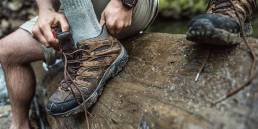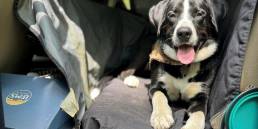Bar Harbor is gray and cold in mid-June. It’s also wet. A storm system, which stayed ahead of us for most of the drive from New Hampshire along the scenic route of midcoast Maine’s snug harbor towns, hovered over Mount Desert Island all day. Only now as we sit in our parked two-door Ford Focus packed to the gills with camping amenities has it stopped.
Per state guidelines, we didn’t bring firewood from home. A search for some at roadside stands yields only soggy results. We decide, then, that it’d be best to drive into town for a take-out supper and bring it with us to our campsite. Our cooler of fresh roasting vegetables and beans will have to wait until tomorrow.
A slobbery smack and a low yawn emanate from the backseat. Wilson, our adopted senior black lab/German shepherd mix rises groggily and thrusts his increasingly whiter snout between the two headrests.
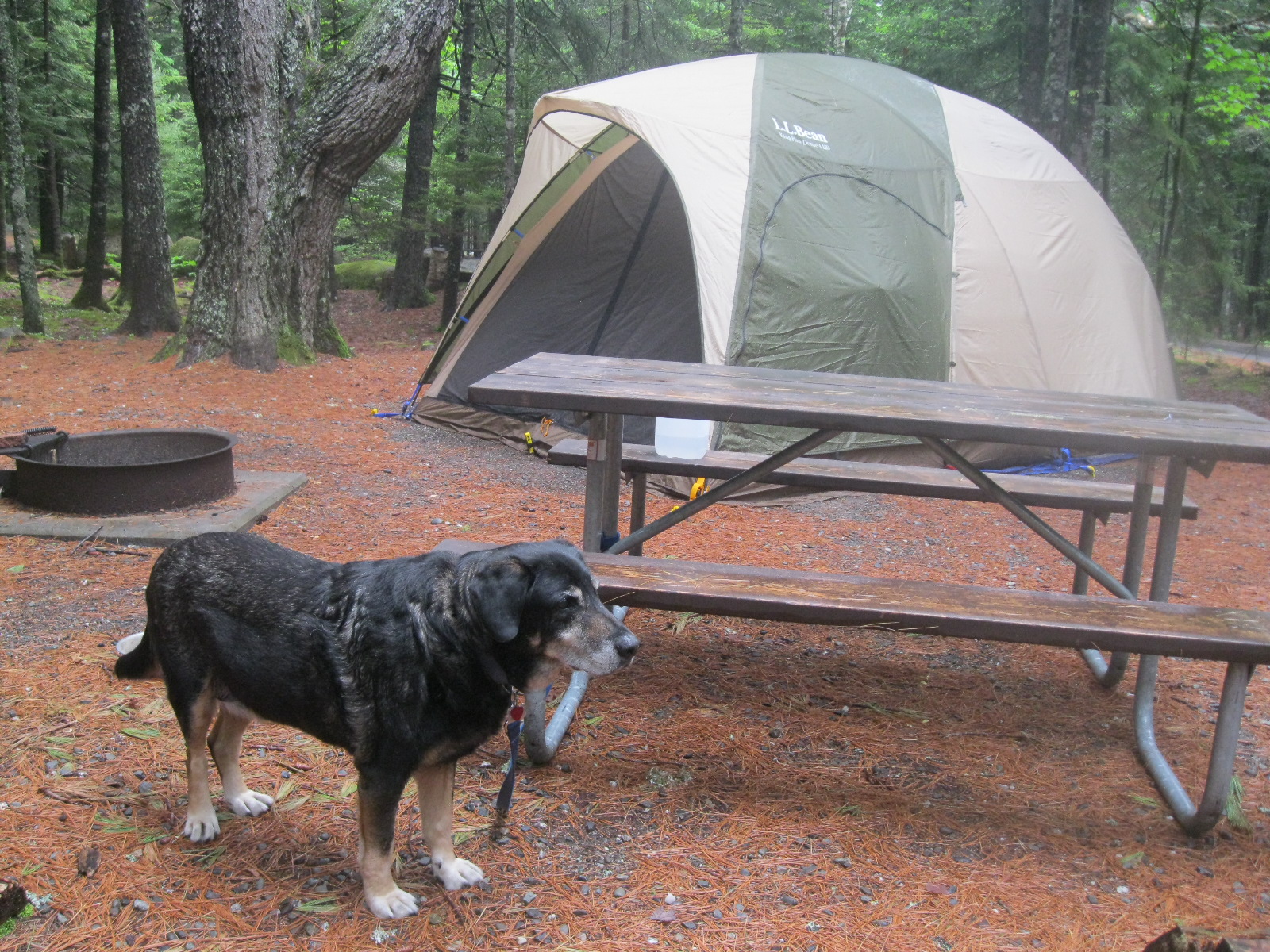
“Hey, bud.”
Kate scratches his chin and kisses his ear. I open the window. He sniffs at the salt air and whines with anticipation and boredom. It’s his first National Park camping trip and there’s lots to explore. Like his human parents, he’s also very ready to be out of the car.
“He probably needs to pee,” I said.
“I’ll take him if you order the food.”
It’s 2014 and online ordering hasn’t been wholly adopted in the way it will in the coming years. I call the number of a restaurant across the lot as Kate folds down the seat to let Wilson out. His legs, stiff from the ride, take a minute to loosen up as he walks with her over to a patch of greenery, lowering his nose to collect its scents, and ready to experience all of this beautiful park’s grand walks this weekend.
We adopted Wilson in the winter of 2011. That year, our rental home in New Hampshire was blanketed with some of the deepest snows we’d ever seen. All we learned of his background was that he came from West Virginia. By his fearful reaction to me raising a shovel to clear snow one morning, it’s clear his life before coming to New England wasn’t a kind one. We doubled down then that we would make whatever remaining years he had the best he’d ever experience. As avid campers and hikers, this trip to Acadia is part of that promise.
We check in at the ranger station at Blackwoods Campground. Wilson peers through the Focus’s porthole-sized back window before sniffing at the ranger over my shoulder.
“Are you familiar with dog-friendly trails?” the ranger asks.
“We are,” I said.
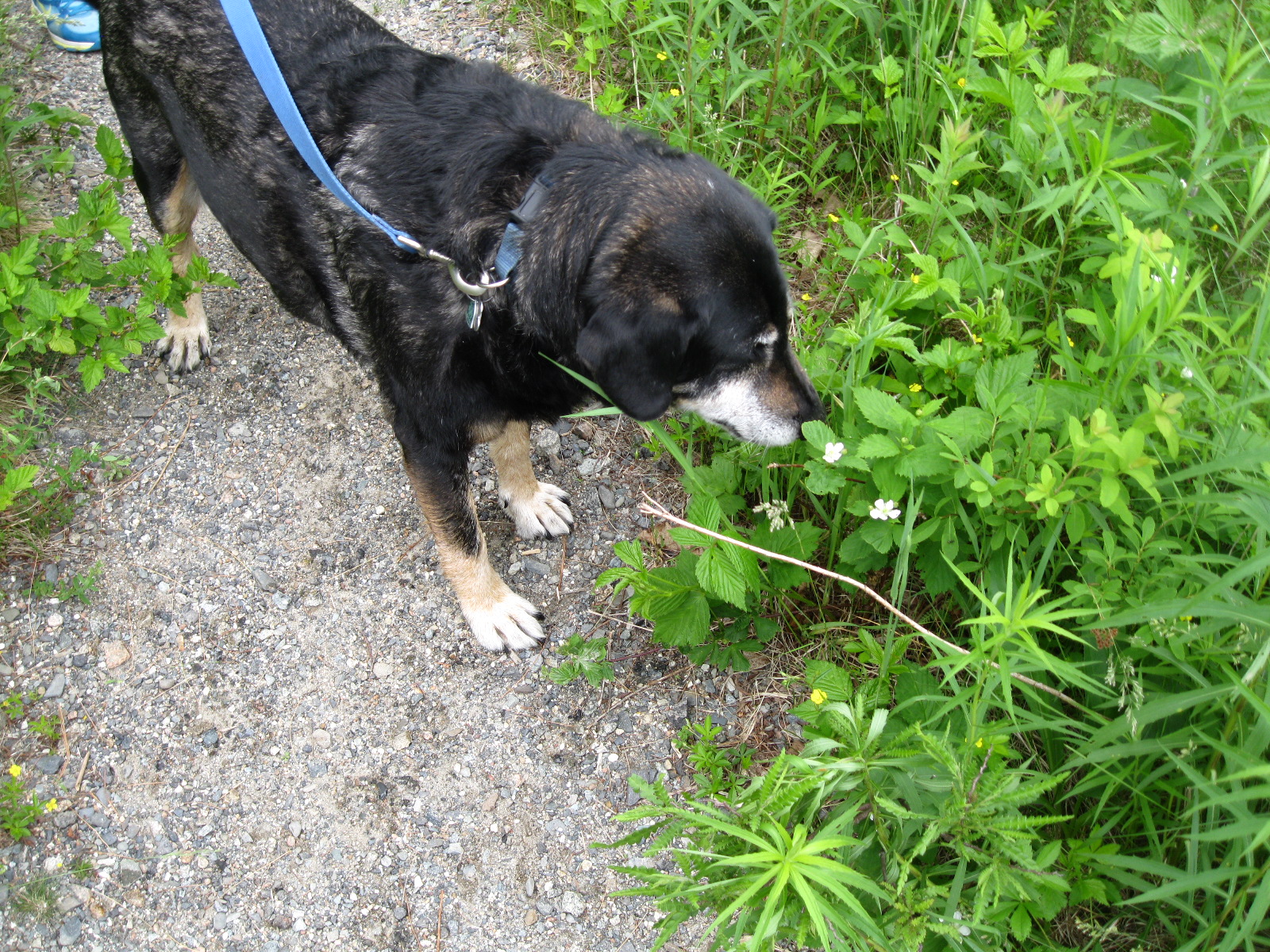
Acadia encompasses more than 47,000 acres. A percentage of those are conservation easements. It’s not the biggest National Park, but its footprint is nothing to wave off either. However, despite its landmass, there are only 100 miles of trails and 45 miles of carriage roads that are dog-friendly.
A few of the park’s trails are closed to dogs completely, including the highly popular Precipice and Beehive trails, which helped narrow our planning. There are also some trails not recommended for dogs, including the western face of Cadillac Mountain. We’d planned, as many overnight hikers do, to watch the sunrise from the mountain’s 1,530-foot summit the following morning. That meant we had two choices: South Ridge Trail, a distance of 7.1 miles out and back, and North Ridge Trail, which clocks in at 4.4 miles roundtrip.
Sitting at our campsite’s sodden picnic table, we go over the park’s trail systems again to find suitable options for Wilson.
I’m not nervous about hiking with Wilson. He comes with us on plenty of hikes, though most are more gradual ascents, and he’s summited Mount Major overlooking Lake Winnipesaukee. His eagerness for twice-daily walks, some hitting five miles, is one of my greatest joys. He’s young in his step despite his age. But I just feel slightly unprepared for a bigger camping expedition. It will be the first dog-plus-human camping trip for either of us. And Acadia’s trails are new terrain compared to the wooden romps back home.

It’s important to look not only at the difficulty level of the trail but also its distance to gauge if it’s right for a senior pet. While a hiker’s stamina might allow for longer treks out and back with higher inclines, it’s best to stick to shorter, flatter, more moderate trails for an older dog.
Even though the South Ridge Trail is accessible from our campground, its rocky terrain, steeper elevation, and length wouldn’t be a good fit for Wilson. We opted instead for the North Ridge Trail, which meant we’d have to drive a bit to get to the trailhead. And though its terrain is also rocky, it’s somewhat more similar to the types of trails Wilson had experienced. Its shorter length meant we could take a slower pace and still get to the summit in time for sunrise.
Kate sets her alarm for a 2:40 a.m. departure time. We set up camp, eat our takeout, sip on cans of beer, and play cards before going to bed.
I wake sometime in the night to find Wilson standing over me, his face inches from my own in the dark. I can feel his whiskers on my cheeks. He whines. Thunder and torrential rain pour down on the tent. I unzip my sleeping bag.
“Come in,” I said.
He lays down with his back against my chest and we fall asleep. Kate’s alarm chirps to life not long after, but the pounding rain on the tent makes our decision for us: we’re not doing the hike. With our decision made—and our anxiety abated—we settle back in to sleep as the rain softens around us.
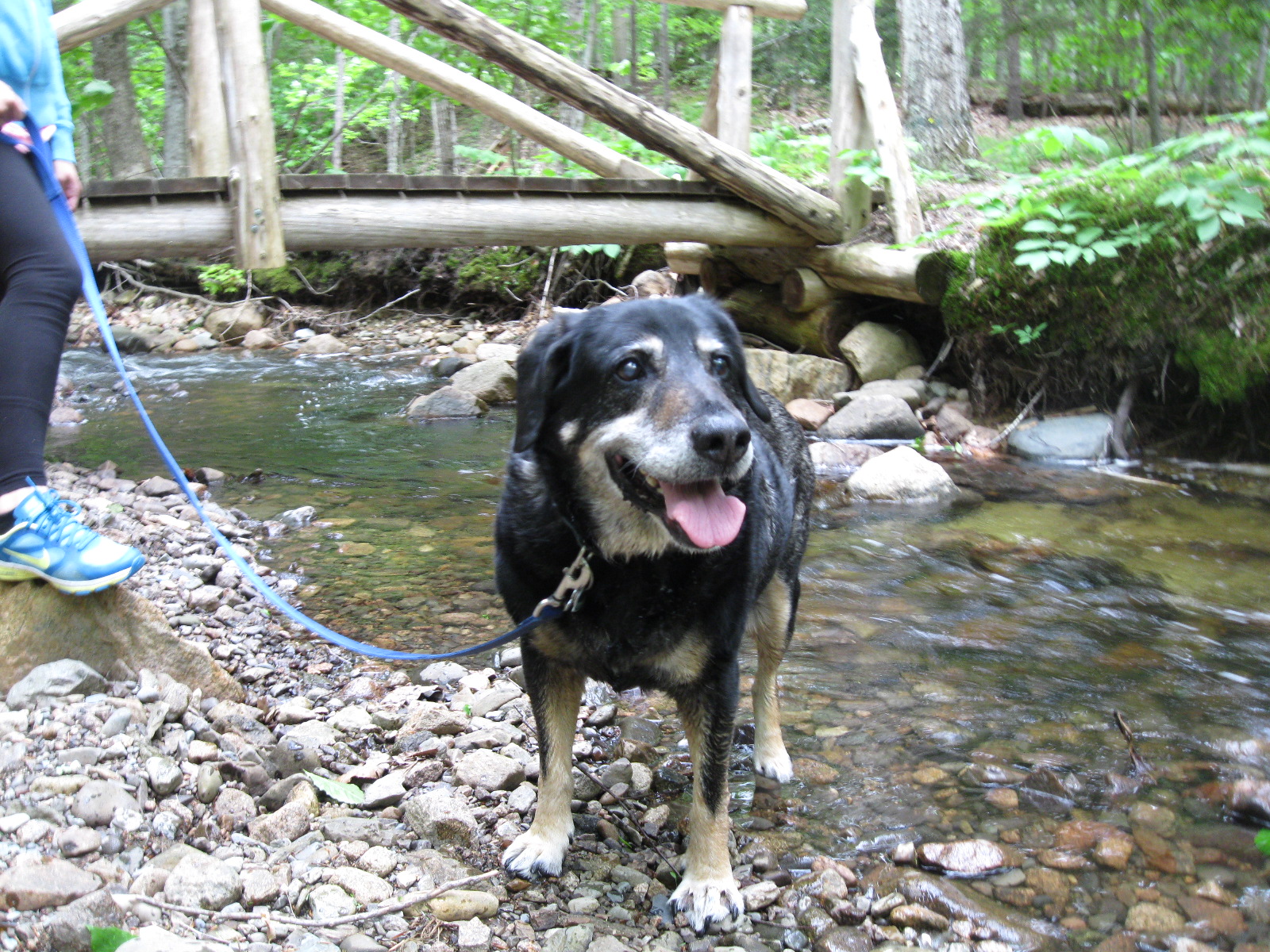
Wilson rises early. By 7:15, he’s had his breakfast and is ready for his morning walk. I grab a banana and we amble around the campground. It’s a good way to stretch our muscles and joints before a full day of hiking. And he’s more than ready to hit the trail. I slow down as we approach our site, but he wants to keep going. When we get back to the tent, Kate is awake and fixes herself something to eat. I refill Wilson’s water bowl and drink my reusable water bottle dry.
Car camping has many benefits, like bringing a very large quantity of drinking water. Despite the Focus’s size, we managed to fit three gallon jugs for each of us, nine total. That’s one gallon each for three days, which we planned to supplement by refilling at visitor centers or restaurants.
A dog should drink about one ounce of water per pound of body weight—which means at 65 pounds, Wilson would need 65 ounces of water in a day and one gallon contains 128 ounces. Bringing three gallons might seem excessive, but those numbers don’t account for the energy exerted hiking craggy trails, the potential of being stranded, and summer heat. We carry a collapsible water bowl for Wilson whenever we go for hikes, especially in the summer.
A dog’s body temperature is regulated differently than humans. They exert energy differently, too. In Wilson’s case, his black, brown, and graying fur warms quicker in the sun. His age and stiff joints mean he uses more energy on the trail, which could dehydrate him faster than just the average walk through the neighborhood or light exercise in the backyard.
As the sun comes out from behind the mid-morning clouds, we make our way to Pretty Marsh, an area partially outside the park’s boundaries, and walk the roads and trails scattered throughout to avoid early morning crowds and the heat. We come to a point in the road with water on either side. Wilson’s ears perk immediately and he locks in position. A duckling, maybe a few months old, navigates the reeds and grasses in search of breakfast. We draw Wilson’s attention away and continue our hike. But I can’t shake the feeling that the duckling and Wilson are similar as new parts of the world open up around them.
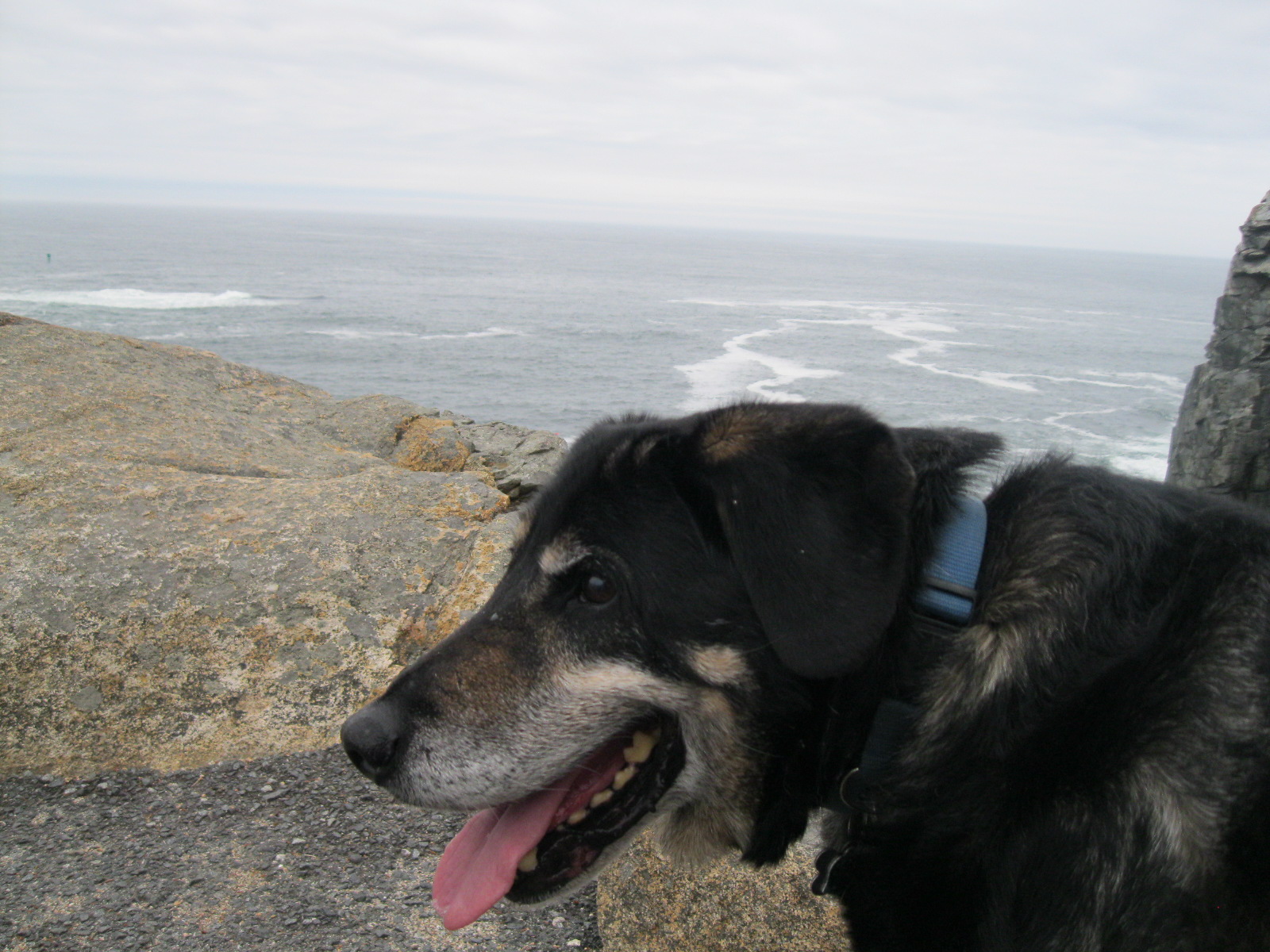
After some side trails and road walks, we head back to our car and make our way to Bass Harbor Head Lighthouse. Clouds roll in and cool the air around us. Wilson, tongue hanging as far out as possible, needs a rest. Kate wanders off to take photos and I read historic signage while Wilson lays in the cool grass beside me. Next, we make our way down Ocean Road, stopping to climb onto Otter Cliff, which overlooks the inlet sea of Sand Beach. But fatigue from the night before and the morning hiking washes over us and we head toward camp, stopping to buy a bundle of wood from a man who assures us he’d taken it in during the rain.
He had not.
At the campsite, I try in vain to start a fire with the damp logs and search for any signs of dry kindling. A neighbor ignites their fire with lighter fluid.
“I’ll be back,” I said.
Kate and Wilson have eaten—peanut butter and jelly and cold veggies for her, his standard fare—when I return with a bottle. But for whatever reason, I’m determined to roast my supper over a fire. It takes several squeezes of lighter fluid (more than I intend), but the fire in the pit comes to life. I look up. Our neighbors have moved their chairs to watch my spectacle and nod toward me when they see the flame. The sky fades to a hue of blue and purple through the evergreen trees. The food is done. I plate it and turn to present it to Kate, who is fast asleep with Wilson snuggled beside her.
On our last morning, Wilson is slower to rise. Yesterday’s all-day hike tired his joints. We decide to slow things down and drive to the summit of Cadillac Mountain. It isn’t sunrise, but it is early morning and some departing clouds keep things cool. As we sit looking out over the Atlantic Ocean, the sun makes a fleeting appearance, shimmering over the park in resplendent decadence, its pink and orange hues reminding me of a halved grapefruit. Its warmth creeps up my body, from ankle to shoulder, like a mother pulling a blanket over a child while it sleeps.
Golden light makes the brown in Wilson’s fur blaze. It illuminates his cloudy, aged eyes to youthful splendor and I can see his brown irises and narrow pupils clearly. I take him in for a few seconds, proud of this endeavor he’s undertaken, and thankful for what he’s taught me this weekend: to trust in his ability to show us his limits and how to care for someone other than ourselves when out in nature. Our adventure is done but as promised, far from over. Wilson turns and takes a few steps across the pinkish stone of Mount Cadillac’s summit, tugging at his leash in my hand.
It was time to go for a walk.
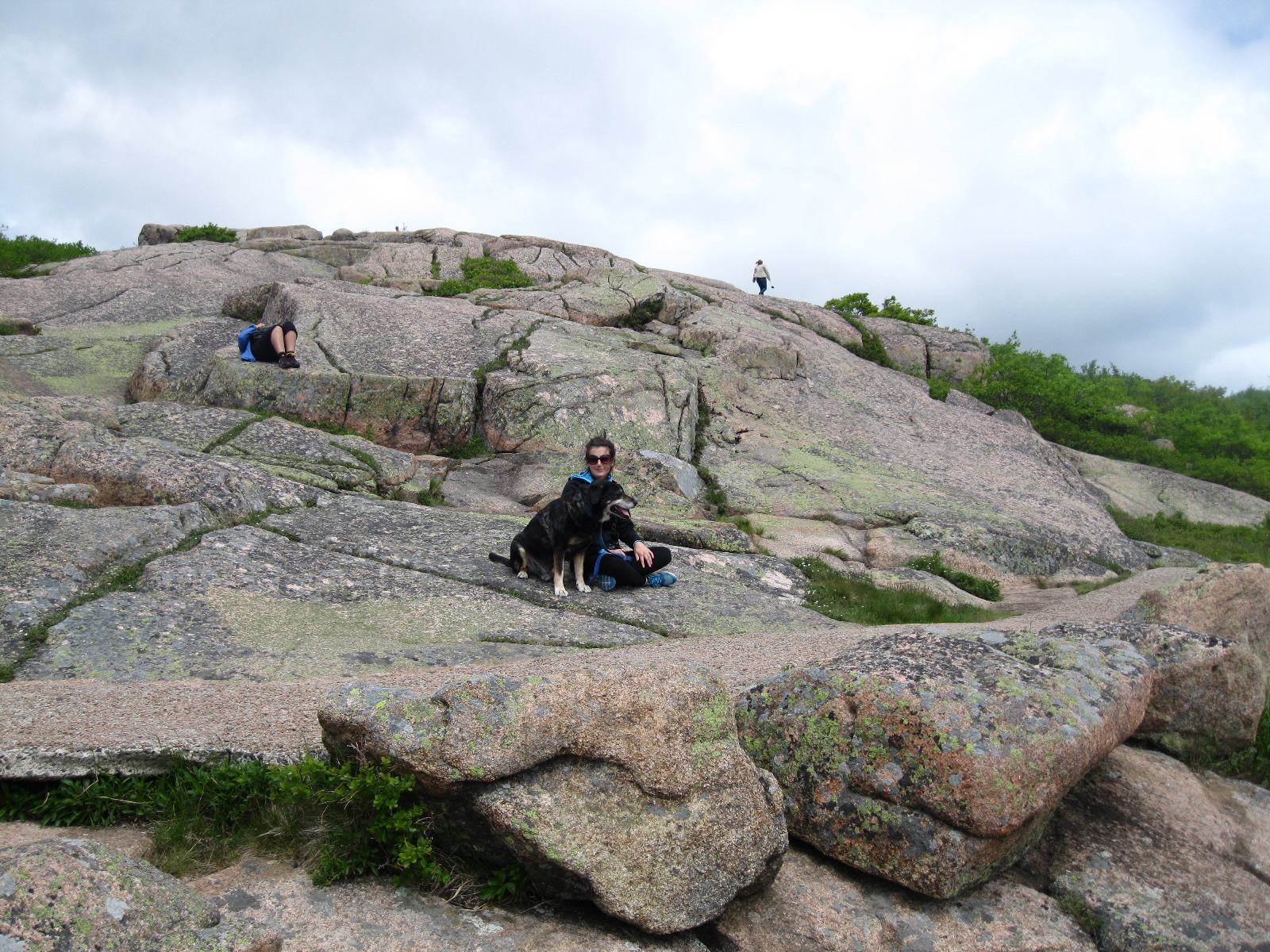
Wilson passed away on a sun-drenched hillside in Austin, Texas, with me and Kate by his side three years later. He’d become a road trip, hiking, and camping veteran, having explored Washington, D.C., Vermont, four more National Parks, West Virginia, Tennessee, Florida, North Carolina, and New York. He moved cross-country to Texas where he swam in rivers and patrolled creeks, ponds, and cedar forests. Through it all, we showered him with love and remembered what he taught us on that first camping trip in Acadia.
Craig Brown
Craig Robert Brown is a writer, hiker, nature enthusiast, wildlife advocate, and heavy reader. His work has appeared in magazines, literary journals, newspapers, and online. He earned an MFA in creative writing from the University of New Hampshire and has moved across the country twice. It was a lot of driving.
Related Posts
April 24, 2024
What to Bring When Road Tripping with Your Dog
Prepare for the ultimate road trip with…


